#nasa apollo
Text
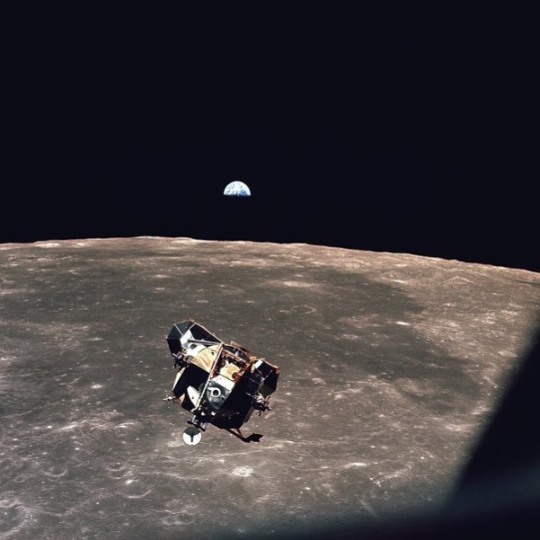
Apollo 11 LEM Descent.
Fun fact: NASA astronaut Michael Collins, who took this image, is the only human in the universe, alive or dead, not shown in this photograph.
#go for queue deploy#nasa#nasa apollo#apollo 11#apollo#apollo program#moon landing#space#spaceflight#space exploration#moon#moon rocket#space program#outer space#astronaut#astronauts#earth#earthrise#earthset#lunar#science#technology#engineering#stem#exploration#alone#lonely
169 notes
·
View notes
Photo
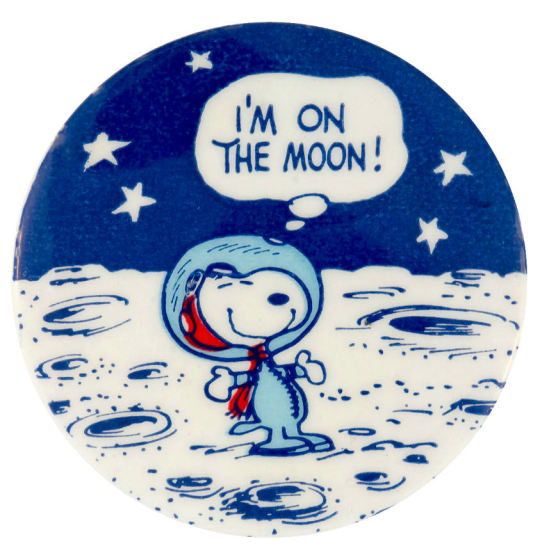
Snoopy button, 1969
13K notes
·
View notes
Text

Moonbound: One Year Since Artemis I
On this day last year, the Artemis I rocket and spacecraft lit up the sky and embarked on the revolutionary mission to the Moon and back. The first integrated flight test of the rocket and spacecraft continued for 25.5 days, validating NASA’s deep exploration systems and setting the stage for humanity’s return to the lunar surface.

On Nov. 16, 2022, the Space Launch System (SLS) rocket met or exceeded all expectations during its debut launch on Artemis I. The twin solid rocket booster motors responsible for producing more than 7 million pounds of thrust at liftoff reached their performance target, helping SLS and the Orion spacecraft reach a speed of about 4,000 mph in just over two minutes before the boosters separated.

Quite a few payloads caught a ride aboard the Orion spacecraft on the Artemis I mission: In addition to a number of small scientific satellites called CubeSats, a manikin named Commander Moonikin Campos sat in the commander’s seat. A Snoopy doll served as a zero-gravity indicator — something that floats inside the spacecraft to demonstrate microgravity.
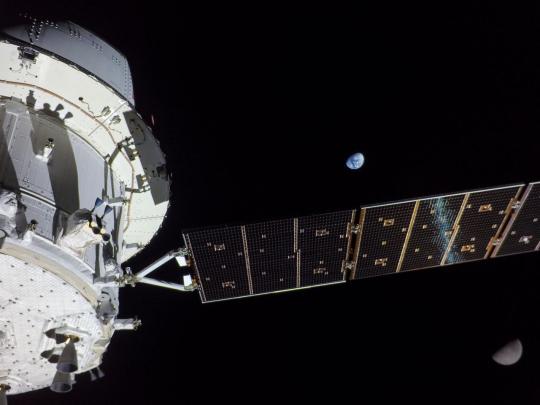
During the mission, Orion performed two lunar flybys, coming within 80 miles of the lunar surface. At its farthest distance during the mission, Orion traveled nearly 270,000 miles from our home planet, more than 1,000 times farther than where the International Space Station orbits Earth. This surpassed the record for distance traveled by a spacecraft designed to carry humans, previously set during Apollo 13.
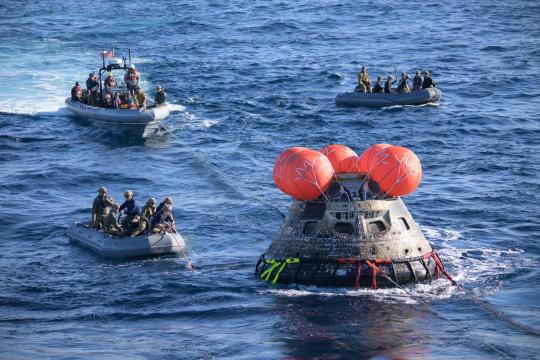
The Orion spacecraft arrived back home to planet Earth on Dec. 11, 2022. During re-entry, Orion endured temperatures about half as hot as the surface of the Sun at about 5,000 degrees Fahrenheit. Within about 20 minutes, Orion slowed from nearly 25,000 mph to about 20 mph for its parachute-assisted splashdown.
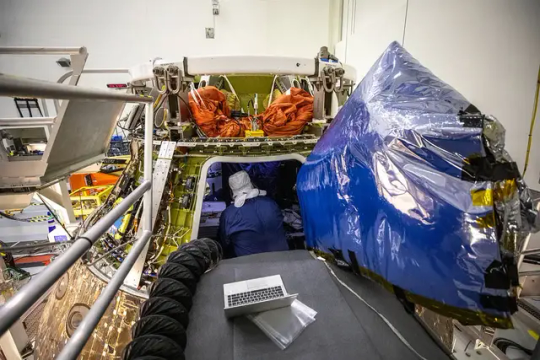
Recovery teams successfully retrieved the spacecraft and delivered it back to NASA’s Kennedy Space Center for de-servicing operations, which included removing the payloads (like Snoopy and Commander Moonikin Campos) and analyzing the heat shield.
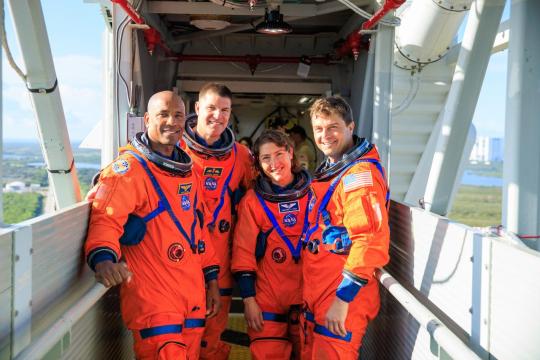
With the Artemis I mission under our belt, we look ahead to Artemis II — our first crewed mission to the Moon in over 50 years. Four astronauts will fly around the Moon inside Orion, practicing piloting the spacecraft and validating the spacecraft’s life support systems. The Artemis II crew includes: NASA astronauts Reid Wiseman, Victor Glover, and Christina Koch, and CSA astronaut Jeremy Hansen.
youtube
As we look ahead to Artemis II, we build upon the incredible success of the Artemis I mission and recognize the hard work and achievements of the entire Artemis team. Go Artemis!
Make sure to follow us on Tumblr for your regular dose of space!
#Artemis#Rocket#Anniversary#Launch#NASA#Space#Moon#Lunar#Astronaut#Apollo#Orion#Spacecraft#Space Launch System#STEM#science#tech#technology#on this day#Youtube
2K notes
·
View notes
Text

The Crescent Earth l Apollo 17 l 1972
#earth#crescent earth#solar system#apollo 17#astrophotography#astronomy#nasa#universe#space#stars#sky#galaxy#planets
1K notes
·
View notes
Text
Friendly reminder this Moon Landing Day that this website exists, where you can drop yourself at any point in the mission where the crew are awake and they'll probably be bantering with Houston.
4K notes
·
View notes
Text

The launch of Apollo 11, July 16, 1969.
3K notes
·
View notes
Text

Apollo 17's Crescent Earth
672 notes
·
View notes
Photo
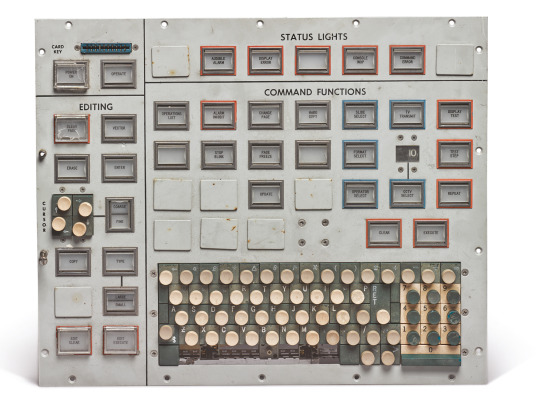

Saturn V Firing Room Panels used for the Apollo missions (US, 1960s)
via
3K notes
·
View notes
Text
The Earth As Seen From
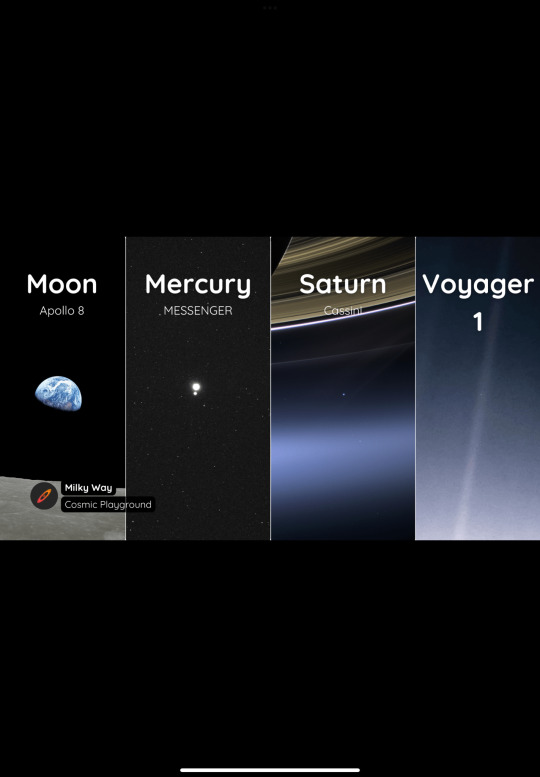
#moon#planet mercury#planet saturn#voyager 1#cassini huygens#messenger spacecraft#apollo 8#astronomy#nasa#astronomers#universe#astrophotography#nasa photos#astrophysics#outer space#nasawebb#hubble space telescope#i love astronomy#astronomy facts#astrography#astrobiology#astronauts#astronaut#astro community#astro notes#astro observations#astroblr#astro boy#planetary science#planetary nebula
249 notes
·
View notes
Text
I love Apollo 8 because not only was it like a monumental human achievement to orbit the moon but also they took like 800 photos and they’re all absolutely stunning



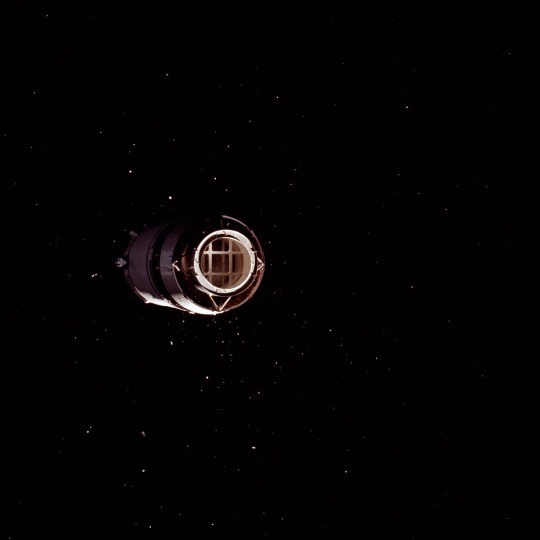
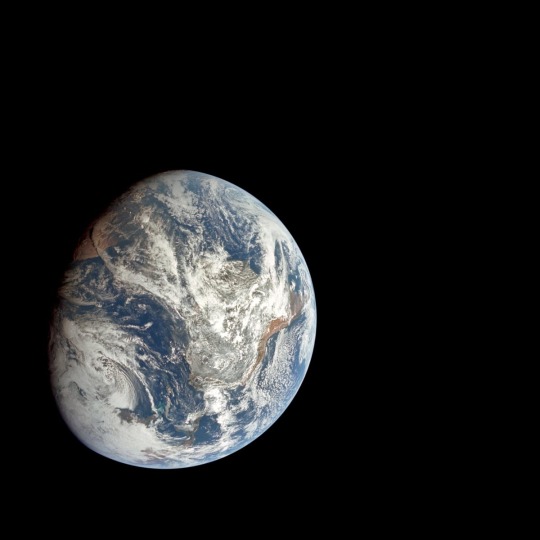
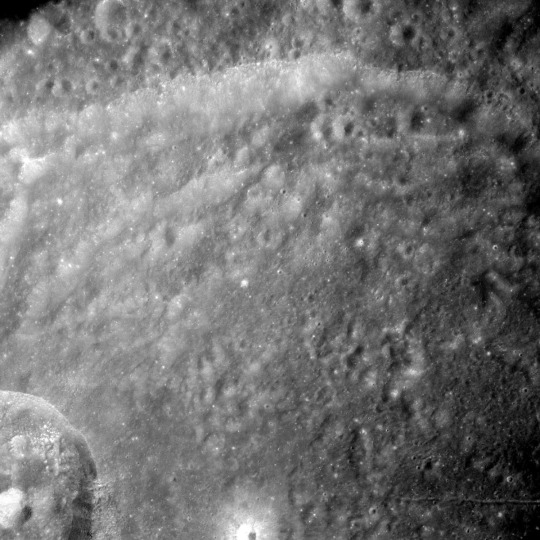


What a beautiful world we share
408 notes
·
View notes
Text
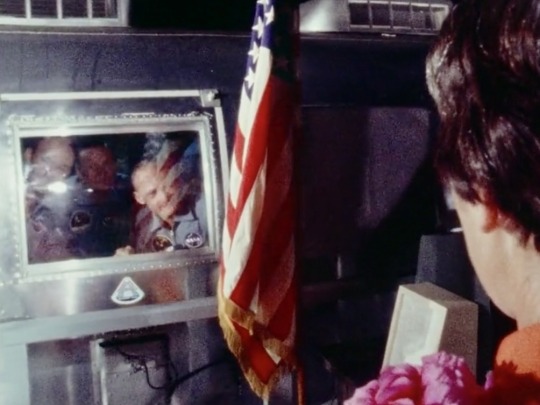

The Apollo 11 crew in quarantine, 1969
#we sent the funniest possible people to the moon#apollo 11#moon landing#space#NASA#neil armstrong#buzz aldrin#michael collins#astronauts#1960s#*
867 notes
·
View notes
Text
The original Moon landing sites
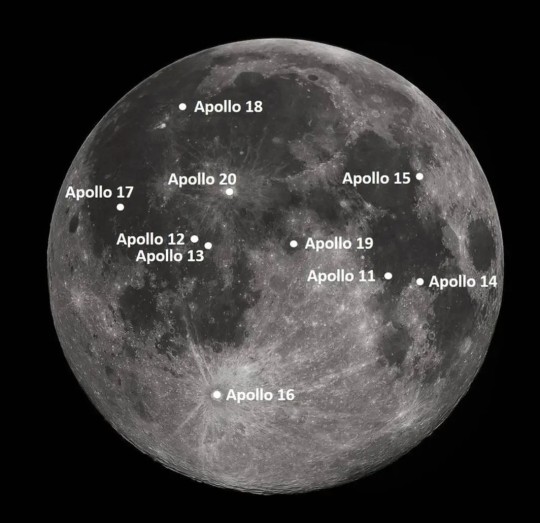
"NASA contracted to have 15 flight-worthy Saturn V rockets produced. Apollo 11 achieved the first landing with the sixth Saturn V, leaving nine for follow-on landings. The following landing sites were chosen for these missions, planned to occur at intervals of approximately four months through July 1972."
Note: I've updated this list with the original tentative planned launch dates.
G-type Mission
Apollo 11: (G) Mare Tranquillitatis, July 1969
H-type missions
Apollo 12: (H1) Ocean of Storms (Surveyor 3 site), November 1969
Apollo 13: (H2) Fra Mauro Highlands, March 1970
Apollo 14: (H3) Littrow Crater, July 1970
Apollo 15: (H4) Censorinus Crater, November 1970
J-type missions, the extended stay missions
Apollo 16: (J1) Descartes Highlands or Tycho Crater (Surveyor 7 site), April 1971
Apollo 17: (J2) Marius Hills or Marius Hills volcanic domes, September 1971
Apollo 18: (J3) Copernicus crater or Schröter's Valley or Gassendi crater, February 1972, later July 1973
Apollo 19: (J4) Hadley Rille, July 1972, later December 1973
Apollo 20: (J5) Tycho Crater or Copernicus Crater or Marius Hills, December 1972, later July 1974
As we all know, plans were changed and missions were cancelled. But it's nice to see what was initially planned.
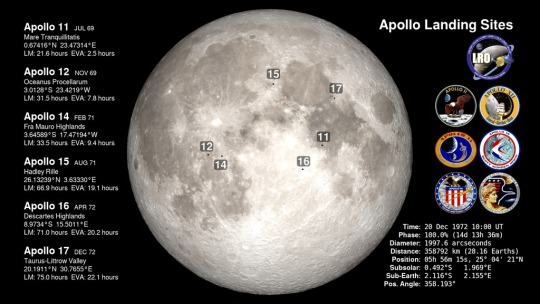
To compare with the actual landing sites and dates:
Apollo 12: (H1) Ocean of Storms (Surveyor 3 site), November 1969
Apollo 13: (H2) never landed, April 1970
Apollo 14: (H3) Fra Mauro, January-February 1971
Apollo 15: (J1) Hadley–Apennine, July-August 1971
Apollo 16: (J2) Descartes Highlands, April 1972
Apollo 17: (J3) Taurus–Littrow, December 1972
NASA ID: link, link
Information from Astronautix: link
Information from Wikipedia: link
#Apollo 11#Apollo 12#Apollo 13#Apollo 14#Apollo 15#Apollo 16#Apollo 17#Apollo 18#Apollo 19#Apollo 20#NASA#Apollo Program#Moon#Moon landing#Lunar Module#cancelled#G-type Mission#H-type mission#J-type mission#Cancelled Mission#my post
436 notes
·
View notes
Text
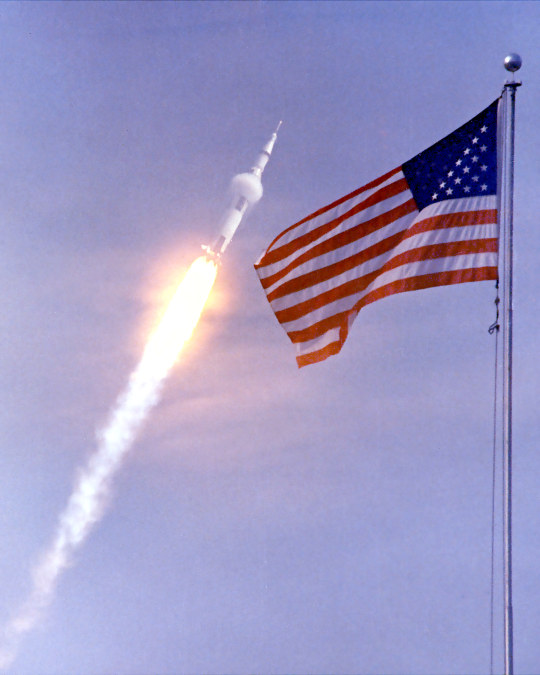
Apollo 11 Launch - 16 July 1969
#NASA#Apollo 11#Saturn V#Rocket#Kennedy Space Center#Launch Complex 39A#Spaceflight#American Flag#Space race#Moon landing#spacecraft#Moon mission
215 notes
·
View notes
Text

Stepping out on the front porch. Astronaut David Scott opens the hatch to check out the view during Apollo 9, March 1969. In this pic taken by fellow astronaut Rusty Schweickart, ‘Gumdrop’, the Command Service Module is docked with ‘Spider’, the Lunar Module. A9 was the 1st flight incorporating all Apollo spacecraft components. The 10 day mission was the 2nd launched by a Saturn V rocket.
#apollo 9#spacecraft#command module#low earth orbit#astronaut#space travel#1969#earth orbit#astronauts#space exploration#vintage space#space#space age#nasa#moon landing#space race#spaceflight#nasa astronauts#nasa photos#space history#spacesuits#1960s
365 notes
·
View notes
Text
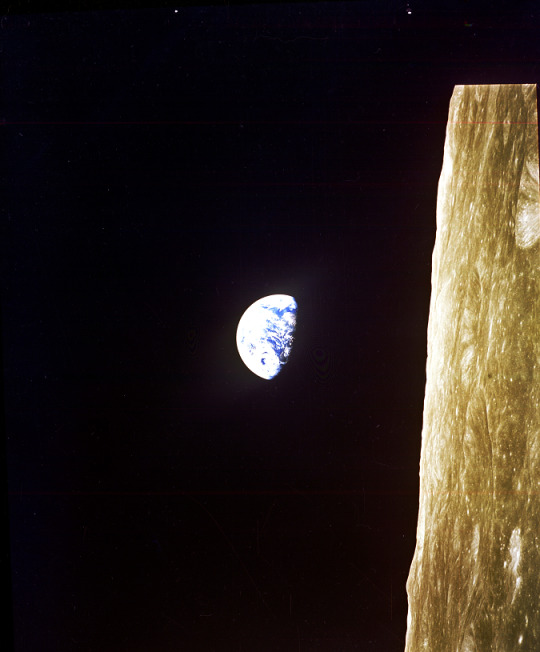
Rising Earth Greets Apollo VIII Astronauts
Record Group 306: Records of the U.S. Information AgencySeries: Master File Photographs of U.S. and Foreign Personalities, World Events, and American Economic, Social, and Cultural Life
This image is a color photograph of earth from lunar orbit. The surface of the moon appears on the right edge of the image. To the left, the earth appears to be floating in the blackness of space. Just over half of the earth is visible, the rest is in shadow.
#archivesgov#December 29#1968#Apollo 8#apollo program#nasa#nasa photos#space#space exploration#moon#1960s
163 notes
·
View notes
Text
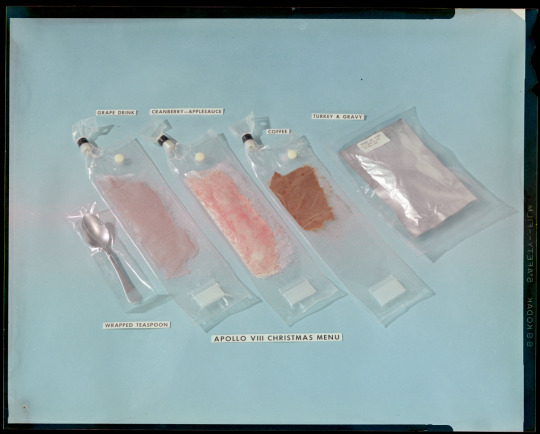
Apollo VIII Christmas Menu, 1968
199 notes
·
View notes